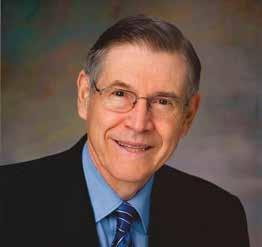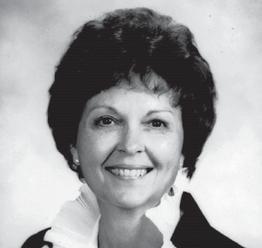
12 minute read
Feature
The Art and Science of a Prescribed Burn
Firefighters, Ranchers Team Up to Train and Make Santa Barbara County Safer
by Tyler Hayden • photos by Mike Eliason
It’s 8 a.m. on Wednesday, May 26, and 50 or so firefighters in navy-blue dress-downs are gathered in a small clearing on the Chamberlin Ranch just outside Los Olivos. They sip coffee and chat about their kids and the Dodgers as a pair of magpies hop and squawk along nearby fence posts.
There’s a light fog in the air and barely a breeze. Afternoon temperatures won’t get above 75 degrees. Perfect conditions to start a few fires.
The circle of men and women draws tighter as Anthony Stornetta, a Santa Barbara County Fire Department battalion chief, starts his briefing. The purpose of the prescribed burn scheduled for that day and the next is twofold, he explains.
The first is to provide wildland training for the newest members of regional crews, including those from Montecito and Paso Robles, as well as more urban departments in Fresno and San Diego. Because if there’s anything California firefighters have learned in recent years, it’s that it doesn’t really matter where you’re stationed—when the next hellstorm hits, you go where you’re needed.
But what crews who typically respond to structure fires might not know is that a brush fire can move 16 times faster on a slope compared to flat ground, Stornetta says. Or that grass just a couple of feet high can spit out six-foot flames that are capable of engulfing a field faster than any person can run. “That’s not survivable,” he says, and that’s why learning how and when to escape in the backcountry is critical. “This is real-life stuff.”
The second objective, Stornetta goes on, is to use the series of carefully planned, intentionally set fires—80 contiguous acres in all—to burn off deadened brush and downed tinder on the property. Removing the excess fuel will offer some protection to the Chamberlins and their neighbors in the event of an actual wildfire, as well as provide a bit of “range improvement,” meaning converting sage and chamise back to natural vegetation for better cattle grazing. Stornetta thanks Russell Chamberlin, who is standing to his side, for partnering with the county on the operation. Chamberlin waves at the firefighters, and they nod back.
Stornetta finishes his briefing by dividing the trainees into “firing teams” armed with drip torches and “holding forces” responsible for maintaining tight grids with hand tools and water-filled backpacks. Contingency plans are discussed for if the flames should jump the line. Helicopters are on standby. And a representative of the county’s Air Pollution Control District is at the scene to make sure Los Olivos isn’t unintentionally smoked out.
As the crews throw on their gear and load into trucks, Stornetta runs through his checklist one last time. It’s hardly his first rodeo, but he still gets butterflies. Months of planning and preparation went into the burn, including the installation of weather stations to track wind patterns and fuel humidity. Stornetta himself was in the field until 8 p.m. the night before, watching the wind. “It’s all about minimizing risk,” he says. “If you’re not nervous, you’re overconfident.”
Using prescribed burns as buffers against extreme wildfires is nothing new for Santa Barbara and the state. Indigenous tribes have done it for centuries. But the strategy had flagged in recent years. Whereas Cal Fire used to clear out 65,000 acres annually in the 1980s, it slowed down to less than 10,000 by 2015.
After a string of deadly, record-breaking conflagrations in 2017 and 2018, however—including the Thomas, Carr, and Camp fires—California’s legislature took major steps toward beefing up its prescribed burn regime. The state now strips nearly 125,000 acres a year, aided by Gov. Gavin Newsom’s $1 billion wildfire budget, with $65 million earmarked for increasing the rate of controlled burns. Stornetta pointed specifically to the Carr Fire as an incident that needn’t have become so disastrous if the buildup of fuel in the area had been better managed.
New laws are helping, too. Senate Bill 1260, authored by Santa Barbara’s former state senator Hannah-Beth Jackson, requires Cal Fire to cooperate on prescribed burns with landowners. It also instructed the agency to create a program
NEAR AND FAR: Firefighters from 13 different California agencies came to Santa Barbara to learn from our experts in wildland containment techniques.
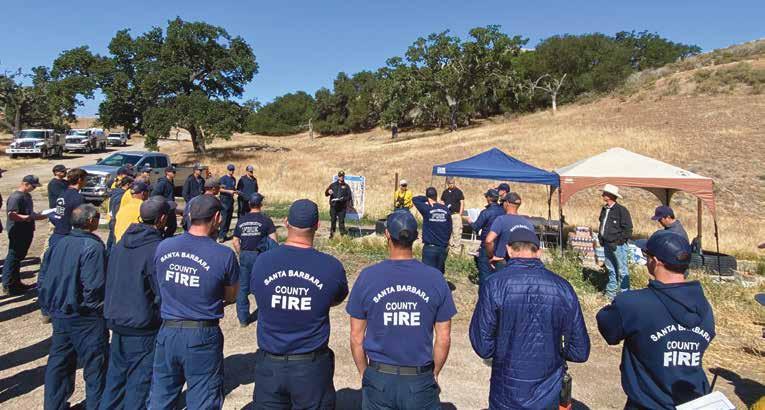
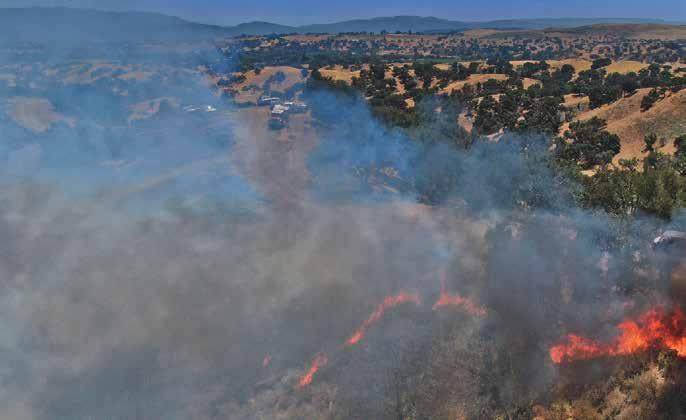
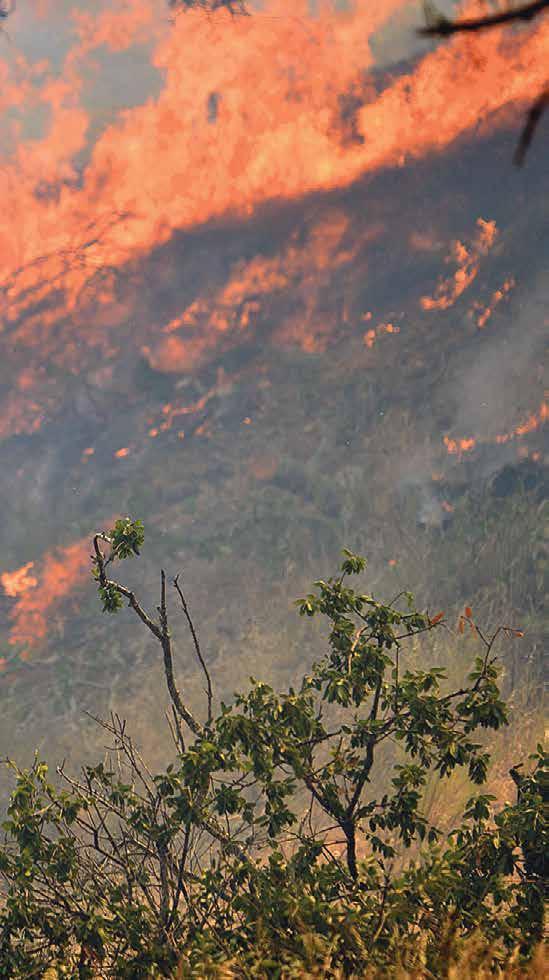
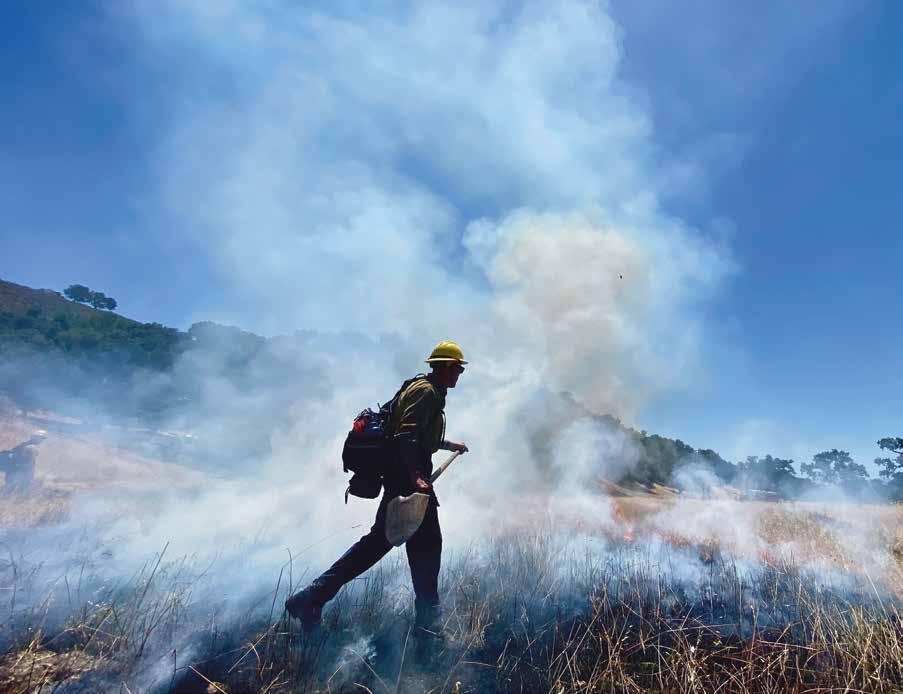
BULL BY THE HORNS: California recently launched a “burn boss” certification program for private ranchers to conduct their own prescribed burns. The first class was conducted in Eureka in May, and Santa Barbara will host its own in the near future.
TOOLS OF THE TRADE: Trainees use drip torches filled with a mixture of gasoline and diesel to burn sections of a dry and overgrown field.
for the pre-certification of “burn bosses,” private ranchers who direct operations at prescribed fires on their properties or others’.
Chamberlin cousin Mary Heyden watches as the line of trucks rumbles to its first location while a lookout vehicle takes position on the ridgeline above. Even though Heyden isn’t necessarily ready to become a burn boss herself, she likes the idea and hopes others in Santa Barbara County opt into the fledgling program. “I think it’s a win-win,” she says.
Heyden is grateful for County Fire’s efforts to eradicate some of the tinderboxes on her property. Motioning to a nearby dry expanse, she snaps her fingers. “It can go up like that.” She also points to a semi-blackened hillside that had been choked by thick chaparral until it was cleared away in a previous controlled burn. It’s now dotted with shoots of green that her cattle will one day eat.
But what’s most important to Heyden and her family is the knowledge that Wednesday’s small fires will hedge against future disaster. “Seeing all those fires and knowing it could happen here—we just want our neighbors to be safe,” she says. Still, Heyden goes on, squinting beneath her wide-brimmed felt hat as a fireman drops flames onto the ground, “It’s just really weird to see someone intentionally set fire to your property.”
The day’s seven instructors are busy showing their teams how to wield the drip cans, where to stand, and why constant vigilance over even slight changes in wind direction is so important. They piecemeal the field in a grid to keep the flames from gathering a head of steam. Chainsaws lop off low-hanging oak branches so the fire can skirt underneath without taking the whole tree down.
Spotters are stationed every few feet with their backs to the action, watching the landscape for any hint of stray embers. Like the rattlesnakes they must constantly mind, they’re calm but ready to pounce.
While County Fire conducts three to four prescribed burns a year, Stornetta says, it only offers the one annual certification. It can be a hard class to get, and it fills up quickly. The Chamberlin Ranch has proved the ideal training ground, he explains, because its existing roads make access easy and provide natural breaks. The undulating saddles of terrain provide realistic containment challenges.
By the end of the two days, each firefighter will be graded on their “knowledge of the job,” “attitude,” “initiative,” “decisions under stress,” and other rating factors.
“This is our bread and butter,” Stornetta says of fighting rural fires and the teachers who show others how to do it. “So we’re good at it.” n
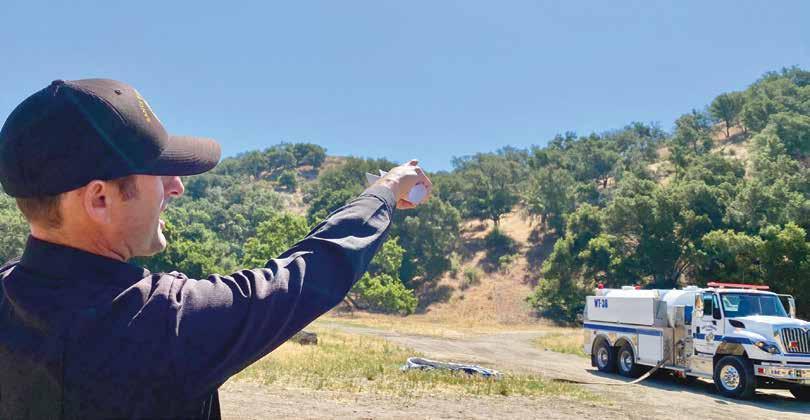
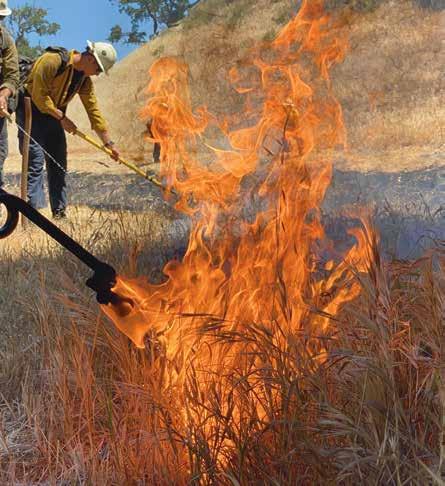
Sage Hunter Donini
1977 - 2021
Born in Longmont, Colorado to parents who shared their passion for the wildlands with her. Sage delighted in summers at Guides’ Hill in the Grand Tetons. Her school years in Leavenworth, WA and Seattle expanded adventures to the Cascades, where she backpacked, climbed and skied with her beloved brother Montana. Her class essays and poetry revealed perception beyond her years and a highly sensitive nature. She performed on tour in Carnegie Hall with the Northwest Girls Choir. In adolescence Sage suffered a traumatic brain injury. She excelled in horse husbandry at Turn-About Ranch, the continuation of her love for pets and wildlife. Physically resilient, Sage birthed 5 children in adulthood , which brought much happiness to each of their adoptive families. While being treated for cancer this year, she reunited with family and composed her epitaph:
She passed away peacefully at her Los Angeles home in hospice care.
Sage is survived by her daughter Rosie Holmes and mother Janet Hunter; father James Donini and his wife Angela Goodacre; Aunts Genella Williamson, Sandra Yanasov and Sherry Hunter; Uncle John Hunter; and 12 cousins.
A memorial service and reception will be held at Sunburst Sanctuary’s Retreat Center (date and time to be determined).
Marion Diane (Maus) Mitlyng
11/15/1943 - 5/25/2021
Marion Diane (Maus) Mitlyng of Montevideo died on Tuesday, May 25, 2021 at Clara City Assisted Living at the age of 77. Memorial services will be held Saturday, July 24, 2021 at 2:00 PM at Our Saviors Lutheran Church of Baxter of Montevideo. Marion was born on November 15, 1943 to Adolph T. and Gladys R. (Sunderland) Maus. She was baptized and confirmed at Rosewood Methodist Church. Marion graduated from Montevideo Senior High School in 1961. After graduating high school, she joined the Women’s Army Corps (WAC). Marion was united in marriage to Jon Mitlyng April 5, 1964. Marion and Jon moved to Santa Barbara, California 1964 and returned to Montevideo in 1975. Marion and Jon had three children: Lance, Matthew, David, and considered her nephews Doug Jr and Cory Maus as her sons.
Marion worked as a farmer, banker, county assessor, and at the Montevideo School Superintendent’s office. She also volunteered at Our Saviour’s Lutheran Church of Baxter and VFW Post 380. Marion’s favorite passion was hosting gatherings for family and friends as she enjoyed having her house full of company. Marion is best known for being “Mom” to everyone from her siblings, children, family, and anyone in need of caring.
Marion is survived by her two sons: Matthew (Anita) Mitlyng of Anoka, MN and David (Tristie) Mitlyng of Denver, CO; four siblings: Bruce Maus of Woodbury, MN, Ruth (Ken) Cordingley of Aberdeen, SD, Marsha (Tim) Radermacher of Montevideo, MN and Cheryl Edling of Colorado Springs, CO; five grandchildren: Alicia, Demie, Andrew, James, and Gregory; nine great-grandchildren.
Preceding her in death is her husband, Jon; her parents, Adolph and Gladys Maus; son, Lance D. Mitlyng; brothers Douglas and Clarence Maus; sistersin-law Judy Marshall and Lorraine Maus; and brotherin-law Jack Edling. Gary L. Wilcox
5/25/2021
On May 25, 2021, Gary L. Wilcox, loving husband and father, passed away at the age of 74 in Santa Barbara, California after a short, but intense, battle with cancer. Gary was born in Ventura, California to Floyd and Ruby Wilcox and married Susan (Scott) Wilcox on December 20, 1969.
Gary attended UC Santa Barbara and earned his BA in Cellular and Organismal Biology, MA and PhD in Biochemistry and Molecular Biology. He was a Professor of Microbiology at UCLA for 10 years, had over 70 scientific publications and 15 patents. He then became an accomplished executive in biotechnology with dreams of helping those with untreated diseases. He co-founded, was CEO and President of Ingene (International Genetic Engineering) in Santa Monica in 1982 and after 11 years, left to play a key role in the development of Cialis for Icos, Corporation in Seattle, WA. Most recently, he was Chairman, CEO and Founder of Cocrystal Discovery in Bothell, WA, working to develop antiviral drugs, and co-founder and member of the Board of Directors of ADRx Corporation in Thousand Oaks working to develop drugs for amyloid diseases. Gary was on the Board of Directors of numerous private, public and non-profit companies and served on the UC Santa Barbara Board of Trustees and the Pepperdine University Board.
Along with his professional accomplishments, Gary loved to travel with his family and had visited over 60 countries combining his love of travel with his love of photography. Most recently, Gary and Sue celebrated their 50th wedding anniversary on a ship in Antarctica. He is survived by his wife, Sue, son David Wilcox, son John Wilcox, daughterin-law Melissa Wilcox and grandson, Max Wilcox. He was a brilliant and loving husband, father, grandfather and friend.
In lieu of flowers, please consider a donation to the Wilcox Family Chair in BioMedicine at UC Santa Barbara (To: UC Regents – memo Wilcox Family Chair in BioMedicine. Address: Office of Development, 4219 Cheadle Hall, UCSB; Santa Barbara, CA 93106-2013) or a charity of your choice.
Due to Covid and family wishes, there are no plans at this time for any services. Margaret “Margo” Chapman
10/20/1928 - 5/14/2021
Margaret “Margo” Ann (Youngstrom) Chapman, 92, a longtime resident of Santa Barbara, passed away on May 14, 2021, in Long Beach, California.
Margo was born on October 20, 1928, in Alta, Iowa to Carl and Dorothy (Andre) Youngstrom and was raised on a farm near Nemaha, Iowa. She graduated with honors from Central Methodist College in Missouri in 1951. Shortly after graduation, she married Dr. Charles G. Chapman. They moved to Santa Barbara in 1959, a town they loved, established roots and raised their family.
Margo found joy in spending time with family and friends, with bi-annual trips to Yosemite and Christmas gatherings among her favorite memories, and dedicating herself to serving the Santa Barbara community. She was a lifelong learner, an avid reader and traveler. Margo had a passion for music and the arts, supporting CAMA, Music Academy of the West, Quire of Voyces, the symphony, opera, museums, and theater. She was an active member in her church at both La Mesa Community Church-UCC and First Congregational Church.
Margo’s commitment to service was evident in the number of organizations she was involved with over the years. She served as President of Child Abuse Listening and Mediation (CALM), the Community Arts Music Association (CAMA), and the Parent Teacher Association (PTA). Margo chaired the Santa Barbara Commission for Women. She was on the Board of Santa Barbara’s Toba Sister City and California’s Medical Auxiliary. Margo served as an advisor to the Junior League, the Visiting Nurse Association and it’s Area Agency on Aging.
Margo was preceded in death by her husband Dr. Charles G. Chapman. She is survived by her six children, John (Roxanne), Andrea Sears (Sidney), Richard, Julia (Charles Andres), James (Tracie), and Carol (Brian Billard). She was blessed with seven grandchildren and one great-grandchild.
The family will hold a private service at the Santa Barbara Cemetery. In lieu of flowers, donations may be made to CALM or CAMA or raise a toast in her memory with a glass of champagne.
